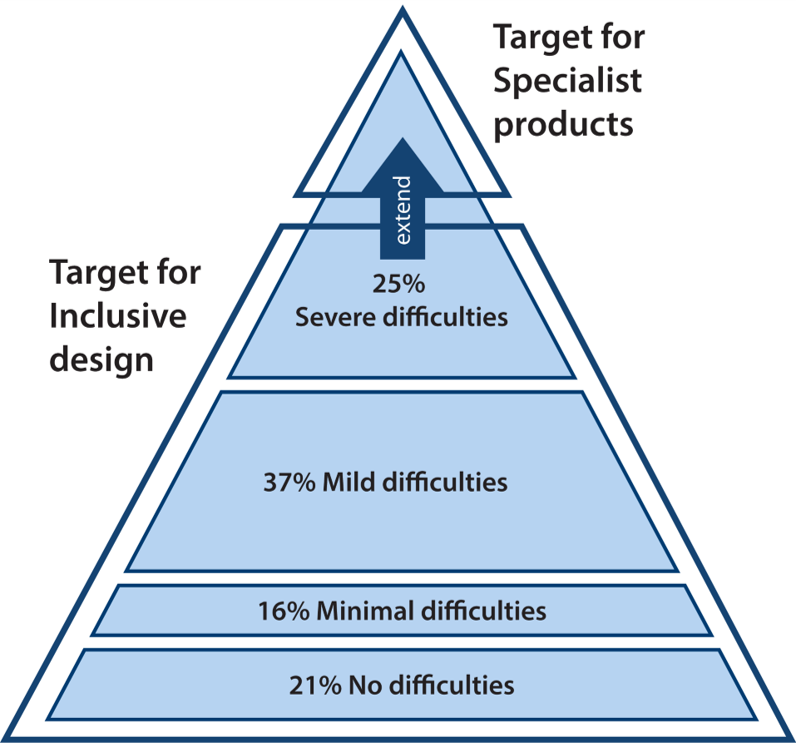


What is Inclusive Design?
Inclusive design describes methodologies to create products that understand and enable people of all backgrounds and abilities. Inclusive design may address accessibility, age, culture, economic situation, education, gender, geographic location, language, and race. The focus is on fulfilling as many user needs as possible, not just as many users as possible.
At its core, inclusive design is about empathizing with users and adapting interfaces to address the various needs of those users. Inclusive design generates inclusive-design patterns.
The British Standards Institute (2005) defines inclusive design as:
“The design of mainstream products and/or services that are accessible to, and usable by, as many people as reasonably possible ... without the need for special adaptation or specialised design.”
Inclusive design does not suggest that it is always possible (or appropriate) to design one product to address the needs of the entire population. Instead, inclusive design guides an appropriate design response to diversity in the population through:

University of Cambridge (n.d.) What is inclusive design? Inclusive Design Toolkit. Retrieved 11 June 2025,
from https://www.inclusivedesigntoolkit.com/whatis/whatis.html
Diversity within the population is better modelled using a pyramid to model the full range of ability variation within a population. This pyramid can then be segmented to identify various categories of users. The bottom segment of the pyramid represents those with no difficulties, and the severity of difficulties increases up the pyramid.
This pyramid model of diversity can be used to show how inclusive design aims to extend the target market to include those who are less able, while accepting that specialist solutions may be required to satisfy the needs of those at the top of the pyramid.
|